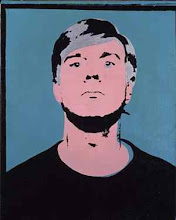 |
| William Klein, Club Allegro Fortissimo, Paris, 1989 |
Although
dismissed by Klein as "kind of stupid" (O'Hagan)
the pairing of the Paris based American and the Japanese photographers seems
both obvious and inspired - acording to Russell Ferguson writing in Open
City, it was seeing a Japanese edition of Klein's groundbreaking book Life
is Good and Good for You in New York: Trance Witness Revels (1956)
that inspired Moriyama to spend his time on the streets,
"mixing
myself in with the noise and the crowds, doing nothing except clicking with
abandon the shutter of a camera which I seized from a friend." (Ferguson,
p13)
Klein:
"I saw the book I wanted to do as a tabloid gone berserk, gross, grainy,
over-inked, with a brutal layout, bull-horn headlines." (Ferguson, p13)
"Klein
even printed aggressively, using bleach and white out on his prints. This
harshness, his use of grainy texture and aggressively high contrast, tight
cropping and almost solid black tones, proved to be inspirational...
Moriyama's Shibuya
(1967) and Yokosuka (1970) are as harsh and as powerful as
anything by Klein ... Moriyama has continued to push his own
technique even harder, often using scratched and otherwise damaged
negatives as well as re-photography to create what has become a unique
and truly personal body of work. (Ferguson, p13)
This
promises to be a terrific show.
References:
Ferguson, R. (2001) ‘Open city: possibilities
of the street’, in Brougher, K. and Ferguson, R. (eds.) Open city: street
photographs since 1950. Oxford: Museum of Modern Art Oxford, pp.9-21
O'Hagan, Sean (2012) William Klein: 'I was an
outsider, following my instincts', The
Guardian, 28 April
 |
| William
Klein, 4 Heads, Thanksgiving Day, New York, 1955 |
 |
| William
Klein, Gun 2, New York, 1954 |
 |
| William
Klein, New York, 1954 |
 |
| William Klein, Installation view of graphic work for book covers, film posters and magazines, 1952-2005 |
 |
| Daido Moriyama, Misawa, 1971 |
 |
| Daido
Moriyama, Smash Up, 1969 [photographed from a road safety
poster] |
 |
| Daido
Moriyama, Yokosuka,1971 |
 |
| Daido Moriyama, Memory of Dog 2, 1982 |
 |
| Daido Moriyama, Yokosuka, 1970/2003
|
 |
| Daido Moriyama, Tights, 2011 |












































,+1969+1970..jpg)







